*NURSING > AQA QUESTION and MARK SCHEMES > BrownieRecipe_2.pd (All)
BrownieRecipe_2.pd
Document Content and Description Below
WEEK 3 1. Consequence of too much O2 → dry & cracking oral mucosa 2. PE s/sx → petechiae, pleural rub, tachycardia (not bradycardia, hypertension) 3. 1 day post surgery (thoracotomy), what shou... ld the nurse do? → teach about incentive spirometer and high fowler’s position (not give O2 nasal cannula) 4. CVP increase → possible right ventricular failure 5. Digoxin toxicity s/sx → nauseous with loss of appetite [REPEAT] 6. Apical pulse location → (image) mitral location 7. PaO2 50 mm → severe hypoxia (anything > 60 mm) WEEK 4 1. Hypokalemia → “U” wave formation on EKG 2. Client’s partner will suction, ready to be sent home? → they perform it independently 3. Best indicator for heart damage → troponin I 4. Patient is on coumadin, what is concerning → PT 45 seconds (normal: 11-12.5) 5. Suspected MI, what do you do first → oxygen WEEK 5 1. Type I patient insulin therapy, barriers? → literacy, dexterity, culture, motivation 2. Give Lispro, when do you wanna give insulin → 15 minutes before breakfast 3. Give furosemide, what do you teach → give foods high in potassium 4. What does coumadin do → prevent stroke in patients with atrial fibrillation 5. SIADH → fluid restriction 6. DKA, blood sugar goes down to 240 → change to D5 NS IV fluid 7. Cushing’s SATA → buffalo hump, purple striation, moon face 8. tPA (tissue plasminogen), what is the most concerning → LOC (not oozing blood) WEEK 6 1. Teaching of Hep B → increase appetite (anorexia) 2. Allergic reaction of blood transfusion → generalized urticaria 3. Asthma exacerbation, priority intervention → nebulizer (not high-fowler's position) 4. +4 edema intervention → pressure relieving mattress 5. Warfarin, contraindication → cabbage (green leafy) 6. Severe cirrhosis → nose bleeding & bruising *bleeding priority* 7. Acute pancreatitis teaching → no cheddar cheese 8. Intervention for ascites → high carbs, high calories (NOT 3in above umbilicus) 9. Cirrhosis, further teaching → “I can eat anything I want” 10. Acute pancreatitis, after pain med → keep them NPO 11. TPN at home teaching (SATA) → keep refrigerated, start D10 if feeding is finished, keep infusion rate if behind on feeding (3) 12. Patient is falling asleep as nurse is talking to them → increased ammonia levels 13. Cholecystitis (SATA) → back rub, incisional splinting, identify pain level, change client position (4) A+ WEEK 7 1. Spinal cord injury, what will occur? → flaccid paralysis 2. What contributes to ICP → sodium 110 (hyponatremia) *always think sodium!* 3. Hep A, early indication → anorexia 4. Acute pancreatitis, where is the pain → epigastric radiating to back 5. What should be reported → ICP of 19 6. Left HH, teaching → put tray & items on patient’s right side 7. Cane teaching with AP → move cane first before legs 8. Stroke teaching → put the patient semi fowlers to facilitate swallowing 9. Associated with embolic stroke → chronic a fib 10. L1, what should you do? → give anticoagulants (they are paralyized → not active ROM exercises) 11. TIA where will you monitor, symptoms go away → go to neurotele & monitor 12. Embolic stroke → it travels 13. Most concern to nurse → unresponsive with arousal 14. ICP sata → headache, slurred speech, eye changes, disorientation 15. Trauma, s/sx hypovolemia → increased HR (tachycardia) A+ Quiz 1 1. SATA AP a. Record Urinary Output b. Assist ambulation pt. Who has a cane c. Move pt to stretcher d. NOT irrigate wound e. NOT eye drops 2. Best position for getting IAP a. Supine 3. PCA a. Pain scale b. IV bolus before lock out c. 30 min lock d. Let fam do it 4. Heparin a. PLT 73,000 b. NOT PTT 65 sec c. Hct 45% d. 5. Holistic care SATA a. Legal members b. Non legal partners c. Anyone the patient identifies as support system d. Siblings 6. Ibuprofen a. Take with food 7. Aspirin a. Expect dark stools b. Monitor tinnitus c. 8. Football on a hot day a. Dehydration Na 152 9. increased CVP what would be the level a. 7 10.What reflects L SIDE afterload a. SVR 11.What would you expect in L HF a. JVD b. Abdominal girth A+ c. Weak peripheral pulses d. dependent edema 12.Suction SATA - Only 3 a. Spontaneous cough b. Cyanosis c. Secretions d. Tachypnea e. …... 13.Increase preload, Fluids a. Crackles 14.Family member in ICU a. Tell fam injuries and plan of care 15.5.4 K a. Call MD b. Omit med 14. New nurse is showing doctor that they have knowledge about using arterial line a. Same level as the phenobarbital axis b. Lay patient supine with head flat c. Recalibrate level after pt moves 15. Adverse effect of digoxin a. Nausea and vomiting 16. What situation do you call RRT for a. Right calf pain and SOB 17. First intervention when patient’s low pressure alarm is ringing? a. Assess cardiac dysrhythmias b. Assess hand for pallor 18. Picture of heart a. The solo on are the right side [Show More]
Last updated: 2 years ago
Preview 1 out of 49 pages

Buy this document to get the full access instantly
Instant Download Access after purchase
Buy NowInstant download
We Accept:

Reviews( 0 )
$8.00
Can't find what you want? Try our AI powered Search
Document information
Connected school, study & course
About the document
Uploaded On
Dec 15, 2022
Number of pages
49
Written in
Additional information
This document has been written for:
Uploaded
Dec 15, 2022
Downloads
0
Views
54

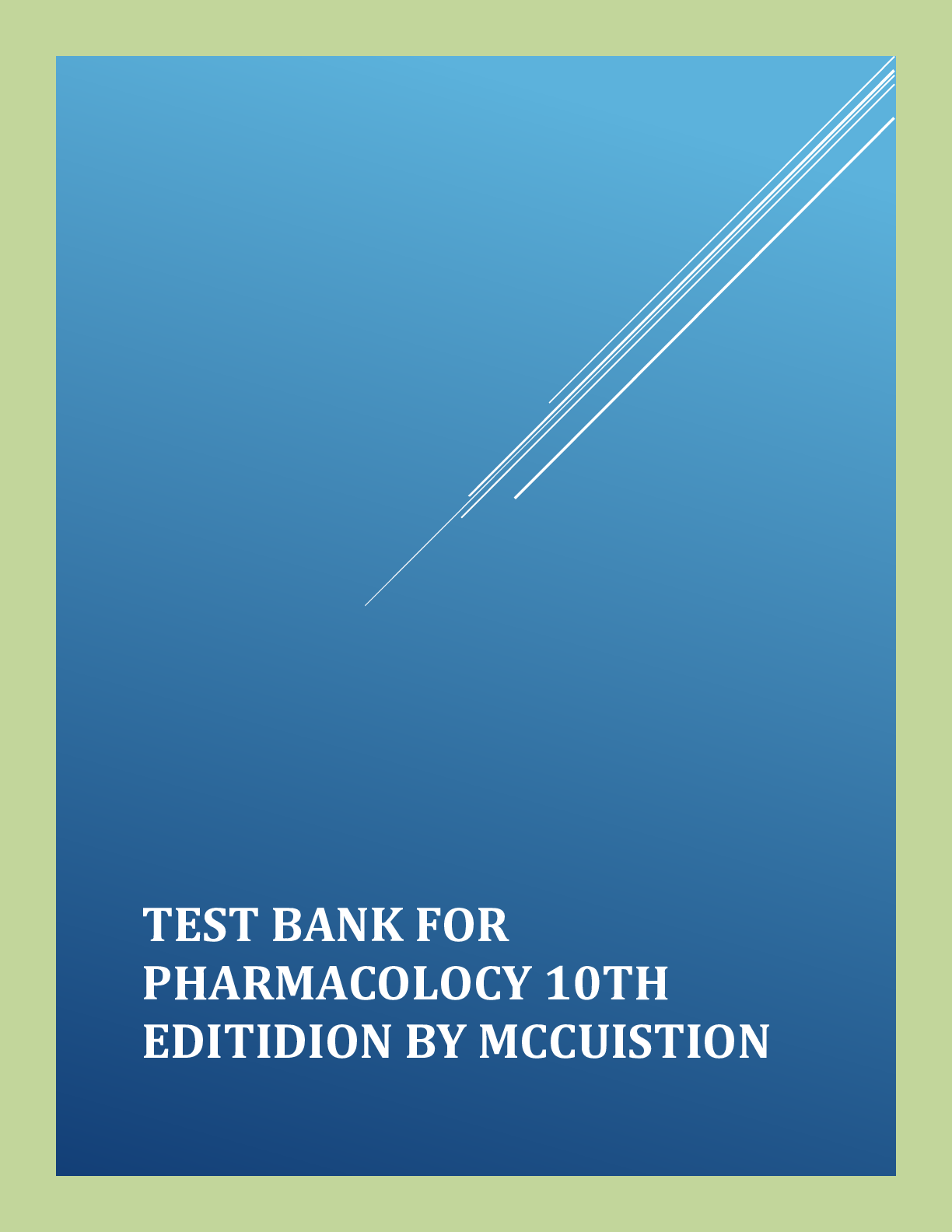
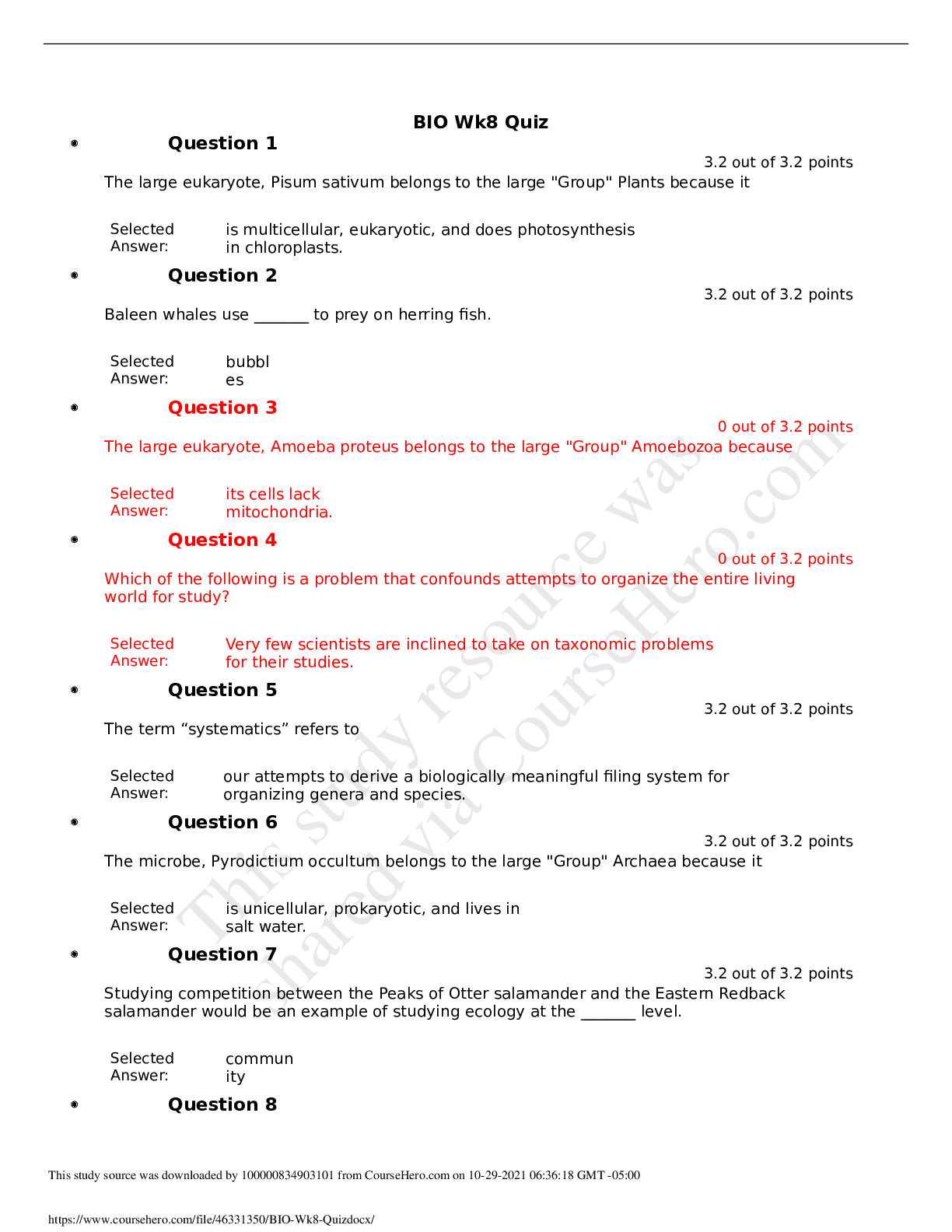





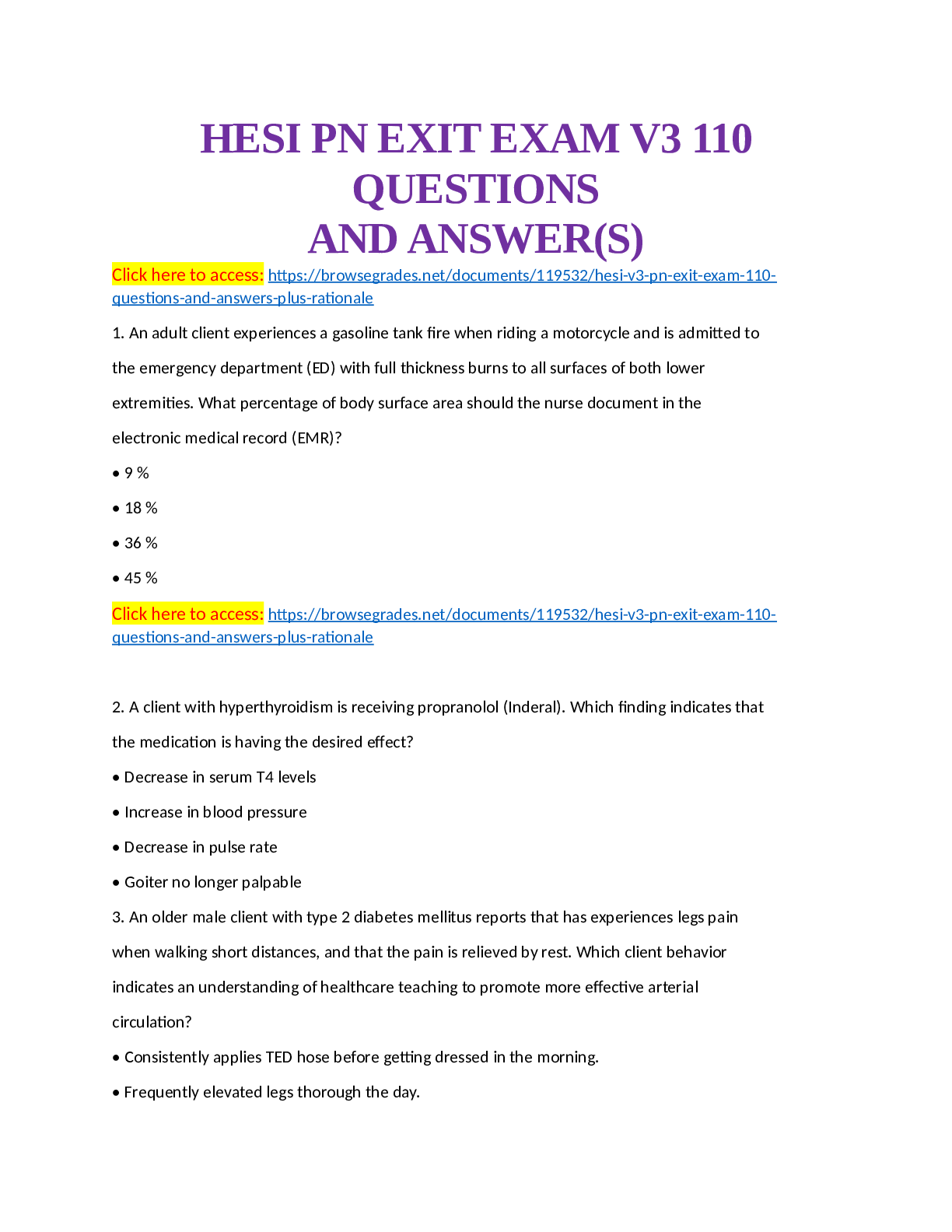

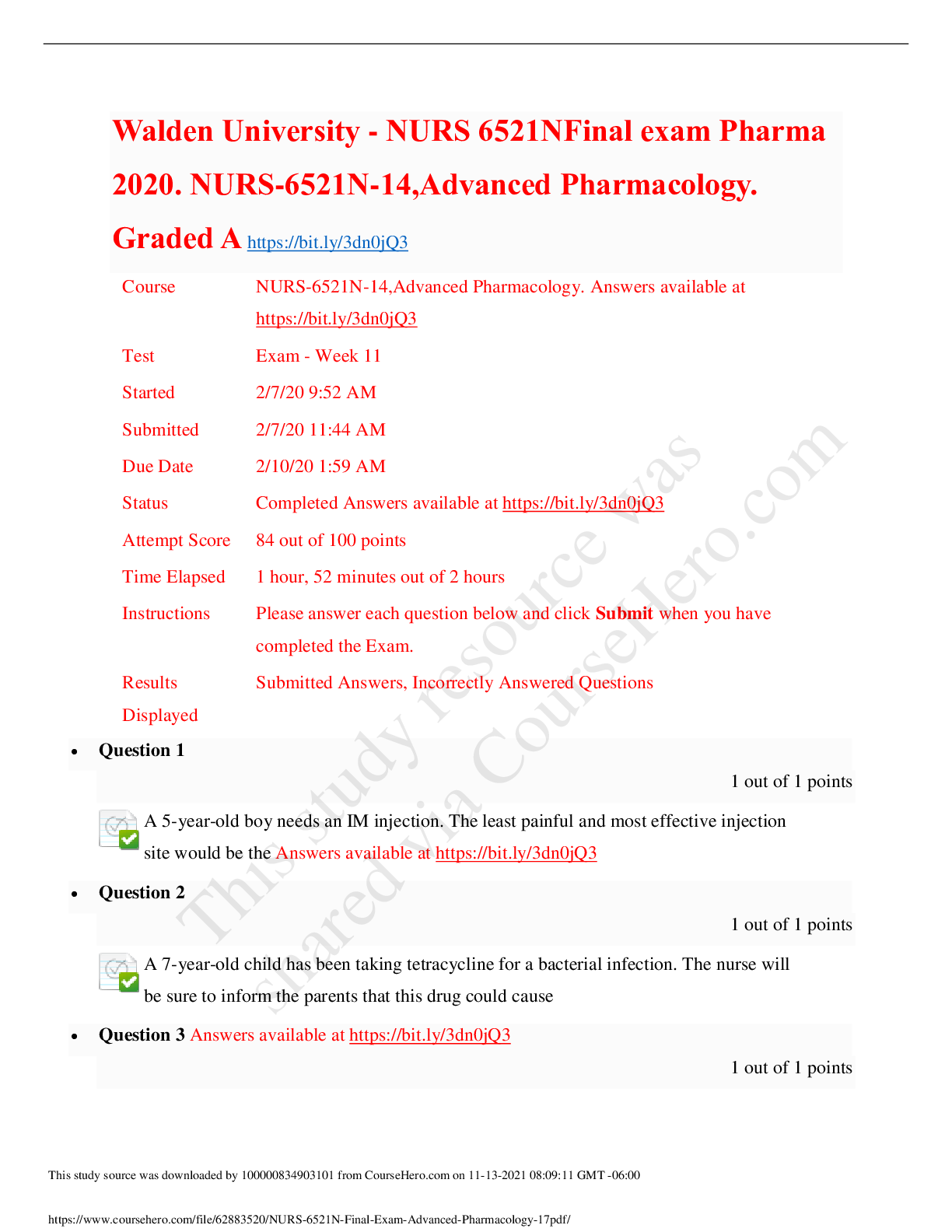
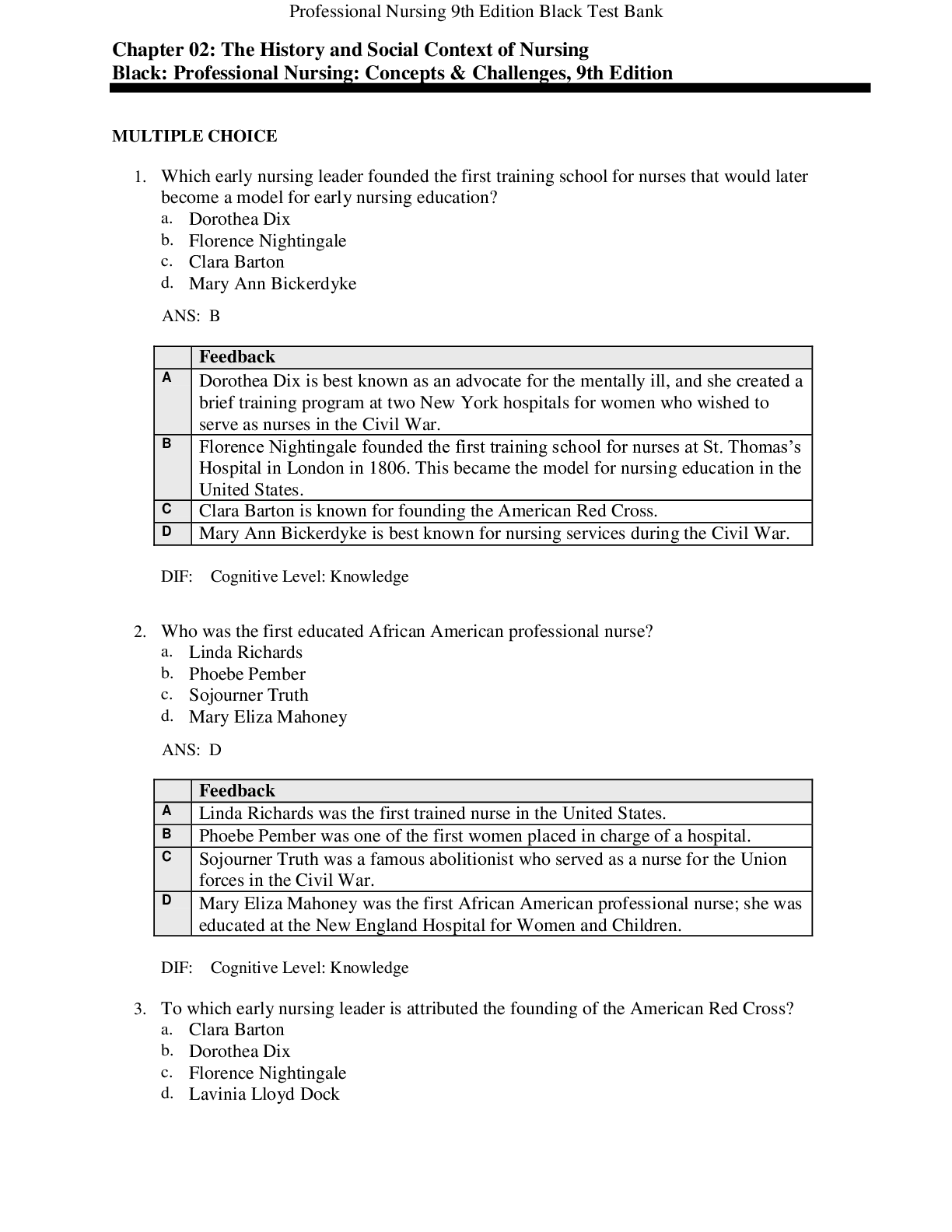








.png)



